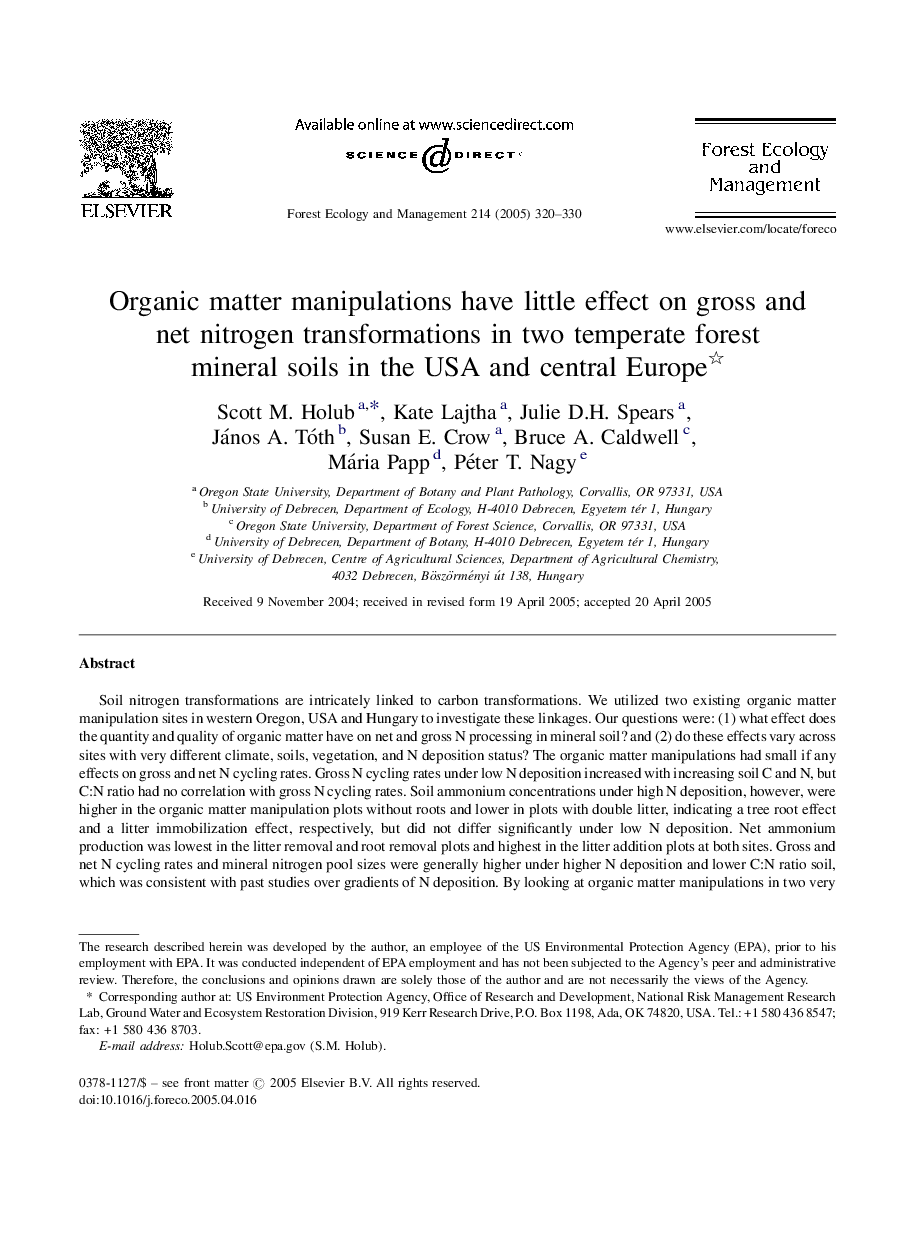| Article ID | Journal | Published Year | Pages | File Type |
|---|---|---|---|---|
| 9620249 | Forest Ecology and Management | 2005 | 11 Pages |
Abstract
Soil nitrogen transformations are intricately linked to carbon transformations. We utilized two existing organic matter manipulation sites in western Oregon, USA and Hungary to investigate these linkages. Our questions were: (1) what effect does the quantity and quality of organic matter have on net and gross N processing in mineral soil? and (2) do these effects vary across sites with very different climate, soils, vegetation, and N deposition status? The organic matter manipulations had small if any effects on gross and net N cycling rates. Gross N cycling rates under low N deposition increased with increasing soil C and N, but C:N ratio had no correlation with gross N cycling rates. Soil ammonium concentrations under high N deposition, however, were higher in the organic matter manipulation plots without roots and lower in plots with double litter, indicating a tree root effect and a litter immobilization effect, respectively, but did not differ significantly under low N deposition. Net ammonium production was lowest in the litter removal and root removal plots and highest in the litter addition plots at both sites. Gross and net N cycling rates and mineral nitrogen pool sizes were generally higher under higher N deposition and lower C:N ratio soil, which was consistent with past studies over gradients of N deposition. By looking at organic matter manipulations in two very different sites we gained some insight into the role that C:N ratio as well as total C and total N have in controlling N and C cycling in forest soils.
Related Topics
Life Sciences
Agricultural and Biological Sciences
Ecology, Evolution, Behavior and Systematics
Authors
Scott M. Holub, Kate Lajtha, Julie D.H. Spears, János A. Tóth, Susan E. Crow, Bruce A. Caldwell, Mária Papp, Péter T. Nagy,
